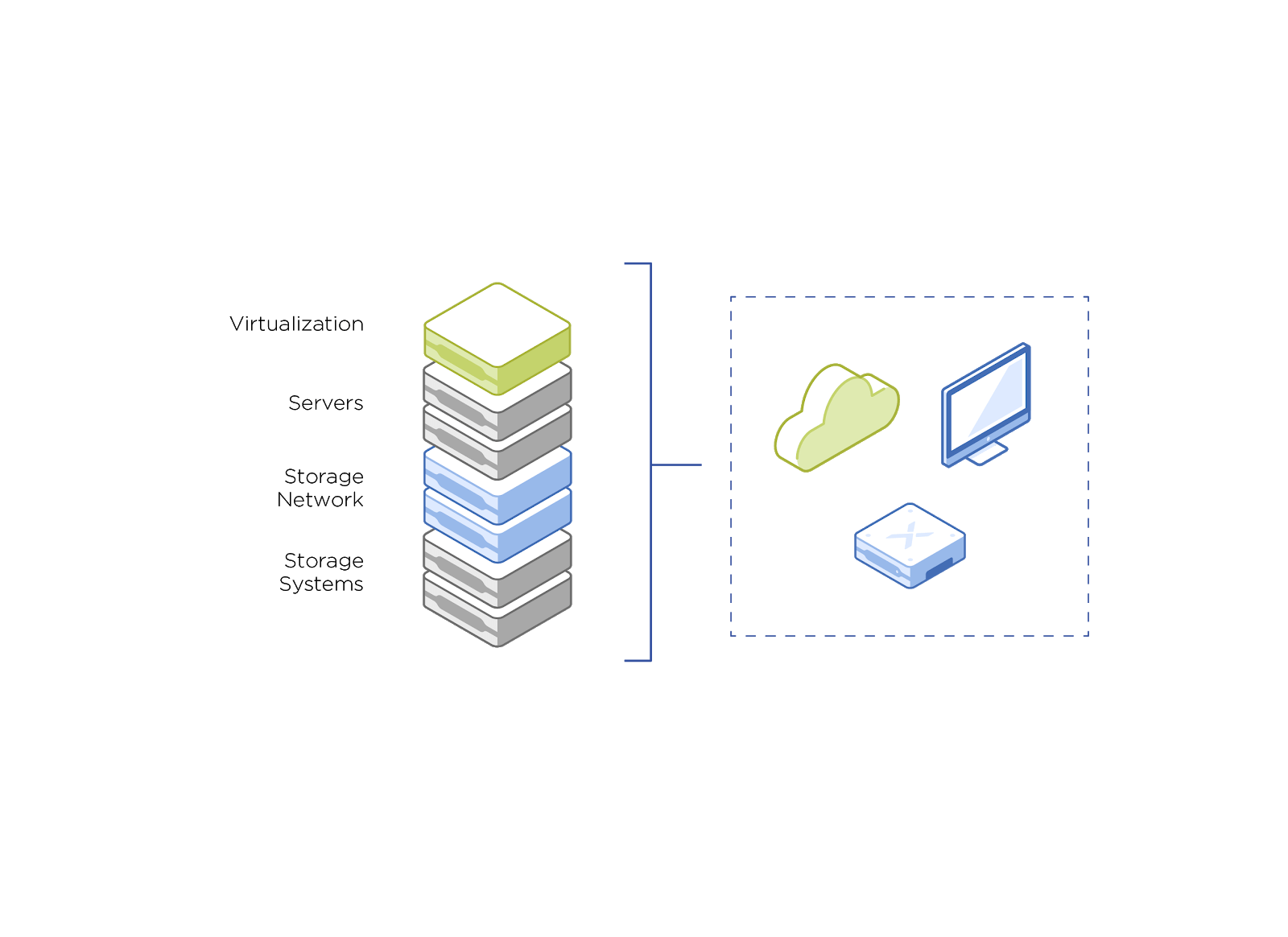Software-defined storage describes products that run on Intel x86 processors and commodity server hardware. In this way, software-defined storage solutions are better suited to cut costs than a traditional software/hardware storage product.
By abstracting resources from the hardware, businesses enjoy improved flexibility, performance efficiency, and easier scalability. Storage resources lend themselves better to programming in this way, and they become key components of a software-driven datacenter. As a result, these resources are much easier to automate compared to those living in siloed infrastructure.
Types of software-defined storage
Software-defined storage is a rather general term, and because of that, identifying types of SDS products can be unclear. However, there are several generally recognized categories under the SDS umbrella.
Block, file, and object storage
This category uses a distributed server cluster to support the three main varieties of storage solutions—block, file, and object. Along with a unified management system, this storage method allows businesses to use whichever method they prefer. However, most will choose 1-2.
Scale-out object
This system creates and allocates a unique identifier to each file or data unit. Some object storage solutions can support file access as well, including NFS and SMB.
Scale-out block
Using x86 server nodes, block storage products cluster these nodes into a single system. The result is businesses can enjoy coherent communication between nodes.
Scale-out file
The earliest SDS category, this category can create highly available scale-out file shares to use with file-driven application storage.
Storage virtualization
This system takes hardware-based storage solutions across various locations and creates a single storage device that can be used and monitored through a single management platform.
Hyperconverged infrastructure
By merging separate servers, storage networks, and storage arrays, hyperconverged infrastructure delivers businesses a single, streamlined way to manage and scale their storage needs.
How does software-defined storage work?
Storage virtualization is a critical component for SDS to work. Storage virtualization is used to separate storage hardware and storage management software, which often also includes some variety of policy management for replication, snapshot, and backup purposes. As mentioned, SDS creates a consolidated virtual “pool” for a business’s disk arrays. From there, virtual disks are formed and appear as LUNs in a host server.
What is the “need” for software-defined storage?
While SDS prospects may see the value of adopting the solution, businesses must consider not just the benefits of SDS, but also the risks associated with sticking to a legacy, hardware-based storage strategy.
According to IBM, businesses need to be aware that there is a “breaking point” with a traditional storage solution. More complex applications are springing up with unique demands; a massive influx of data is putting pressure on traditional storage; and expectations of what a storage strategy can and should do are changing. And unfortunately, despite these rising demands, business budgets are tighter.
Inevitably, a traditional storage approach will start to crumble under the pressure. Businesses need greater flexibility than legacy storage can provide. Even if an organization preemptively adds capacity before their storage needs arise, this approach is neither sustainable nor cost-effective in the long-run.
Why businesses choose software-defined storage
Businesses who have adopted SDS enjoy much-needed advantages in everything from costs to scalability. Because SDS can be used with an x86 server, businesses realize improved flexibility when it comes to selecting IT managers, eliminate vendor lock-in challenges, and far more.
Without question, SDS is an economic storage option for businesses hoping to reduce their CapEX expenditure. Since SDS exists on x86 servers, businesses do not have to fork out the costly expenses associated with proprietary SAN storage arrays.
Furthermore, choosing for a software-defined solution is an excellent way to deliver centralized intelligence into the datacenter. Since SDS separates “intelligence”—i.e., software—from devices, administrative tasks are reduced, and businesses can leverage automated policies in their storage plan, letting them respond quickly as storage requirements shift.
Benefits of software-defined storage
There are multiple benefits of adopting software-defined storage that are pushing more businesses to choose a hardware-neutral approach to storage. Because of its flexibility to deliver and digest various data storage options, businesses can leverage their data—not just sore it—and realize better insights.
In addition, thanks to its automation capabilities, organizations can experience:
Related resources

The Top Storage Considerations for Unstructured Data

利用 Nutanix Files 重新构建文件服务
文件服务需要采用一种新方法。它既可提供公有云的可扩展性和弹性,又对企业级功能没有影响,从而满足您的本地文件服务器需求。

